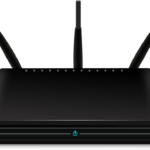What is the internet of things?
The internet of things (IoT) is the inter-connectivity of various physical devices with networks to achieve a specific task. The task in most cases includes the collection and exchange of data. The IoT connects physical objects cameras and lights, that can be remotely controlled through a series of sensors or networks. For e.g., CitySense, a smart street lighting technology, controls the brightness of street lights based on the number of automobiles and pedestrians. It can filter interferences like animals, trees, and other objects and caters only to the need of people and traffic.
IoT is increasingly being adopted in every sector from healthcare to schools to improve the quality of human lives. Multinational companies like Intel have already started rolling out products based on IoT. By 2020 some 50 million devices are expected to be connected to the internet via IoT.
How can it be used for cyber-attacks?
As technology progresses for the benefit of humans, the threat of misusing it does too. Cyber-attacks are no less harmful than physical attacks and in fact, might cause more damage. The IoT is a connection between everything that is common around us and gaining complete access over such a technology is gaining power. And power in the wrong hands means destruction.
The best example for the misuse of IoT is that of the attack on the Krebs on Security website.
The Krebs on Security is a storehouse of important information on cyber-crime. The attack was a distributed denial of service (DDoS), which means that important services become unavailable for users. Unlike other DDoS attacks which involved a method called amplification, this attack involved IoT devices. Instead of using computers, attackers used simple devices like video recorders and cameras to hack into the system. Now imagine if such an attack happened when every device in this world is connected. It would give rise to an “internet of terrorism’.
One of the main channels through which cyber-attacks take place is called a thingbot. The concept of thingbot comes from the concept of Botnet. Botnets remotely take control of devices connected to networks and distribute malware. Thingbots take a step further and attack independently connected objects. Cyber-crimes have grown exponentially since the last century and cyber-security experts have had their hands full. The IoT is literally an open pass for cyber-criminals and it shouldn’t be surprising if IoT devices become hacker’s favorite toys.








